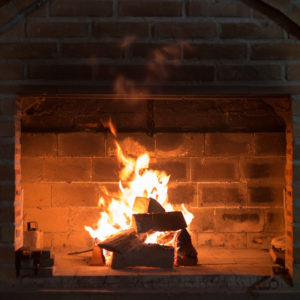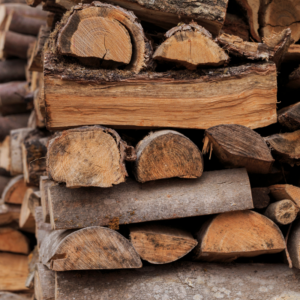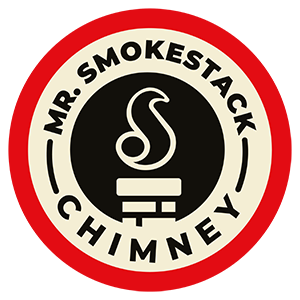This part of winter can seem to drag on, but punctuating it with cheerful fires in your fireplace adds warmth and comfort to the short, cold days. That said, if you’ve ever had trouble starting a fire in a cold chimney, you know how frustrating it can be – especially when you’re ready to relax in front of a hot, warming blaze.
It’s not just your imagination. Cold does make starting a fire more challenging. But these challenges can be overcome with a little know-how and few simple tricks.
What Creates the Trouble?
 Cold air is denser than warm air. The density of cold air will cause it to descend down your chimney, often in the form of a chilly draft that smothers your attempts at fire starting. While it’s true that warm air rises and should want to ascend up your chimney, it’s essentially in a wrestling match against a wall of cold, dense air. Long story short – it’s going to need a little help!
Cold air is denser than warm air. The density of cold air will cause it to descend down your chimney, often in the form of a chilly draft that smothers your attempts at fire starting. While it’s true that warm air rises and should want to ascend up your chimney, it’s essentially in a wrestling match against a wall of cold, dense air. Long story short – it’s going to need a little help!
If you try starting a fire without giving your fire a little help with warming the chimney, it will likely be slow going. Again, cold downdrafts can smother and extinguish fires – but even if your fire starts to take off, the cold air can force smoke and carbon monoxide into your living space. On top of that, your fire will be inefficient because so much initial energy will be used to heat the firebox and chimney before it can really burn well.
Fire-Starting Tips
So, what can be done to help? Here are a few suggestions.
🔥 Warm up your chimney flue.
Your chimney needs to contain warm air to allow your fire to thrive and to draw smoke and flue gases up your chimney properly. The first step in successfully starting a fire in cold conditions is priming, or warming, the chimney.
To do this, roll a newspaper into a cone, light it, and place it at the throat of the chimney. Take care not to burn yourself while holding the ignited paper as near the damper as you can. After two or three minutes, the concentrated heat from the burning paper will move through the chimney flue, warming the air inside.
🔥 Think upside down.
When it comes to arranging wood for your fire, it might be time to reverse your thinking. Experts say that if you place the largest logs on bottom with the middle sized pieces on top, then place kindling as the topmost layer, you’re likely setting yourself up for success.
This is known as a top-down fire. When you light the kindling, it burns readily – creating instant heat to travel up the flue and warm up the firebox. At the same time, the flames and sparks the kindling and smaller pieces of wood generate move down the pyramid to ignite the larger logs. The result? A cleaner, hotter, more efficient burn.
🔥 Consider a top-sealing damper.
If you want to update one component of your chimney system to reap the benefits of efficient cold-weather fire starting, your chimney damper is likely the best place to start. Your damper seals off your chimney when you aren’t using it, guarding against possible obstructions from the outside and protecting against the damage that precipitation can wreak on your chimney system, and it opens to allow smoke and flue gases to safely exit your home when your fireplace is in use.
A top-sealing damper is positioned (unsurprisingly) at the top of your chimney. This is an ideal place to act as a barrier against precipitation, leaves and debris, and critters – and also to minimize cold air’s entry into the chimney in the winter.
Thoughtfully investing in system upgrades yields long-term benefits in efficiency, cost savings, and ease of use. Top-sealing dampers tend to maintain a more snug seal than throat dampers over time, and are also well positioned for success in protecting your system and making it more convenient to use year-round.
🔥 Form smart fireplace habits.
Your practices during the regular use of your fireplace can also work for – or against – you. If you have bad habits, it’s time to change things up!
 Bad Habit One: Using less-than-ideal firewood.
Bad Habit One: Using less-than-ideal firewood.
Firewood is firewood, right? Well, not exactly. All wood has water in it, but well seasoned firewood has been dried over time to reach the ideal moisture content – 15-25 percent – then stored properly to avoid getting damp. This matters for several reasons (many of which are safety-related), but one is that if your fire is spending its energy both on warming the firebox and trying to evaporate off water in your fuel and fighting downdrafts… Well, you can imagine how successful that will be!
Bad Habit Two: Being overly zealous about removing ash.
Leaving a layer of ash about two inches thick insulates your fireplace. This means more pleasant heat comes your way, and it means your fire will start more readily. So set down that shovel and wait to scoop out ashes until they exceed that two inch layer, or until the end of the season – at that point, you can clear them out until next fall to keep your fireplace healthy.
Looking for More Information? Reach Out!
If you have questions about the care and maintenance or your fireplace, don’t hesitate to reach out. We’re certified, knowledgeable, and experienced – and thoroughly dedicated to serving our community well. Call us at 919-747-1859 or book online with us today
